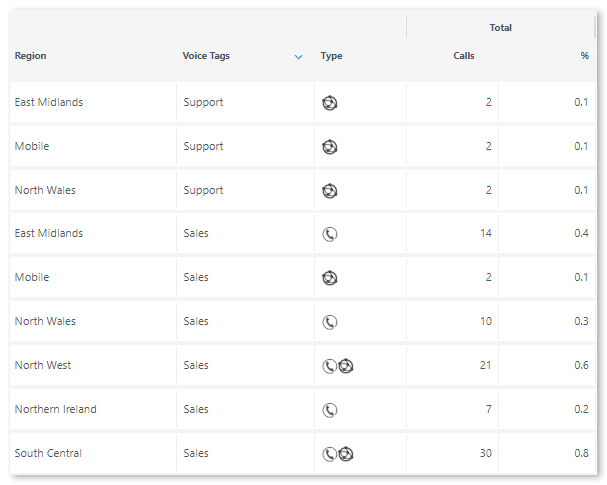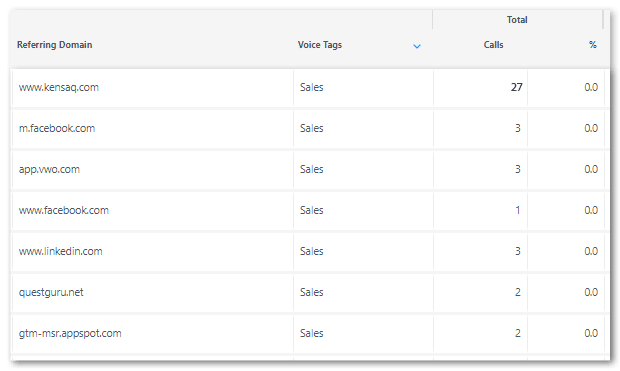How to use speech analytics to create highly targeted audience segments in Google Analytics
First party data is a goldmine to advertisers. Creating custom dimensions in your analytics gives you a much deeper level of insight into the audience you’re targeting, allowing you to segment your data even further.
Unlock more first party data
Speech analytics categorises what has actually been said on your call, be it a sales call, support or service call. You can apply this as a secondary dimension to learn for example whether a particular source or keyword is effective at producing sales calls. It’s much more powerful than that however.
Below, I’ll get you started by explaining how to use voice tags to uncover and create new audiences and create three meaningful segments that you haven’t even thought about. There’s also some bonus material at the end…
Optimise your remarketing ads, reduce CPA, drive more high-quality calls
Did you know you can create different remarketing campaigns, based on what was said on calls, for visitors who are in your sales funnel?
Once you know, by using speech analytics, what callers are enquiring about, you can serve them the best ads to keep them moving along the journey – and make that returning visit count.
For example, let’s say a caller enquires about getting their car serviced, or availability of a care home room, or an appointment at a dentist.
- That call is immediately categorised by Mediahawk’s speech recognition and the category passed to Google Analytics.
- Google Analytics then adds that visitor to an audience interested in that particular service.
- The caller can then be served a highly relevant advert offering for example a promotion for that service.
Without speech analytics this caller would never have entered this custom audience in Google.
Segment 1: Calls by geographic region
Let’s look at segments.
How are inbound calls distributed geographically, and what are the conversations about? By looking at the geographic breakdown of inbound calls then adding voice tags as a secondary dimension, you can see if there are any trends in the types of calls originating in certain regions.
If you see a high prevalence of sales calls from the south central region, for example, you can devote more of your budget to improving conversions from that audience. Use localised information, shipping info, available products and services, and social proof from local customers, in your remarketing campaigns to increase trust, reassure prospects, and showcase your local track record.
You may also notice high demand from regions you don’t operate in, identifying opportunities for further growth and expansion.
If you’re looking after the marketing for a legal firm, for example, you might find you’re suddenly seeing an increase in the number of calls relating to commercial law in a region you don’t normally target. You could then use the data to further refine your audience segments to laser target this area to drive more enquiries.
Segment 2: Calls by behaviour
We’re all used to seeing retargeting ads based on pages we’ve visited online. If you then cross-reference the types of calls you get from different pages, you can create hyper-targeted campaigns:
A prospect visits the product page, then makes a call. Adding voice tags as a secondary dimension to the ‘Pages’ report means you can see whether the calls you’re getting from that page are sales calls, or other queries. You can then retarget those users with more specific messages that relate directly to their conversations.
This also gives you a better grasp of how content readers convert in comparison to other groups – yet more information you can use to improve your remarketing campaigns and to reinforce your content strategy.
Segment 3: Calls by referrer
If you’re getting a large number of high-value sales calls from a particular referral source, you can create audience segments based on the referral source to drive more enquiries from particular websites.
Personalised landing pages for retargeting campaigns that mirror the tone of the referrer and repeats their endorsement, builds trust even further – enabling you to get the maximum benefit from that referral source.
Bonus: Using speech analytics to spot more opportunities
You can also use voice tags to inform the content of pages and improve the customer experience. Seeing the type of calls certain pages generate allows you to understand in greater detail how visitors interact with site content.
- You might see a particular page generates a lot of sales calls, so you can use that insight to bring this content out more.
- Maybe there’s a query that comes up again and again from a certain page that means you’re getting a lot of callers all asking the same question, but they’re not the type of call you want. You can look at the content of the page and address the issue causing the confusion.
- You could be getting calls for products or services that you don’t have a page for. Those calls are a strong signal that you need to be adding that content to your website to exploit those enquiries.
- Make suitable next-step suggestions that are in context with the visitor’s journey, and their stage in the buying process.
- Rephrase your messaging for returning callers and visitors, and steer them directly towards desired actions.
- Conversely, calls you might receive about service, complaints – or even wrong numbers – from online sources can be identified and addressed in the appropriate way to free up sales lines.
Key take-aways
- Conversation insights from speech analytics are highly effective in validating and improving your remarketing campaigns.
- Segment your audience much more accurately based on their online journey behaviour and their interactions with your business.
- Optimise your operations, focus on high-value callers, and minimise low value calls, by improving your messaging.


